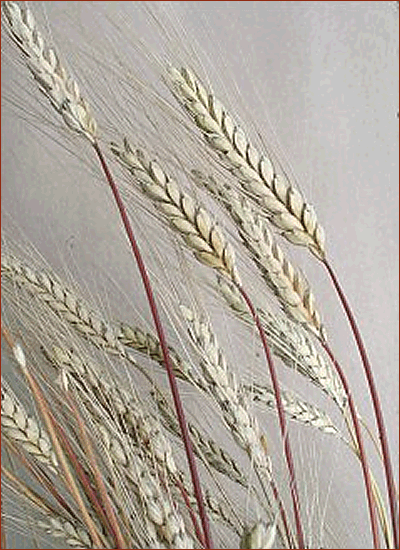 |
Wild Emmer was harvested by the hunter-gatherers of the Stone Age for
many millennia. At some stage in the development of mankind, the
cognitive reasoning ability had increased enough for man to be able to
realise a regular annual cycle of plants. About 12,000 to 10,000 years
ago, some of the Neolithic Age tribes began to cultivate Wild Emmer,
genome AABB, instead of relying on the wild supplies. It is probable
that, as the population increased, the local supplies of wild grain
became insufficient and encouraged the cultivation of additional
supplies. The plants would originally have had ears with a brittle stalk
or rachis, similar to the wild form, fragmenting into separate spiklets
when ripe. The tribes-people, most probably the women, would have
naturally selected the larger intact ears when they harvested the grain.
This subconscious selection led to the rachis gradually evolving from
the brittle form into a non-brittle form.
By about 9,500 years ago, (9,500 BP / Before Present) a new
Cultivated Emmer, genome AABB, had been created that no longer
fragmented into individual spiklets when ripe, but had become dependant
upon man for propagation.
Although Cultivated Emmer was still a hulled wheat, it became one of
the most important crops for 7,000 years, spreading throughout most of
the Near East. It reached Egypt about 6,000 BP and became the principal
cereal until replaced by free-threshing Durum Wheat around 2,500 to
2,000 years ago. Although used by the Egyptians for bread making, it
lacks the gluten proteins that are required for the dough to rise and
produces a poor quality loaf.
|